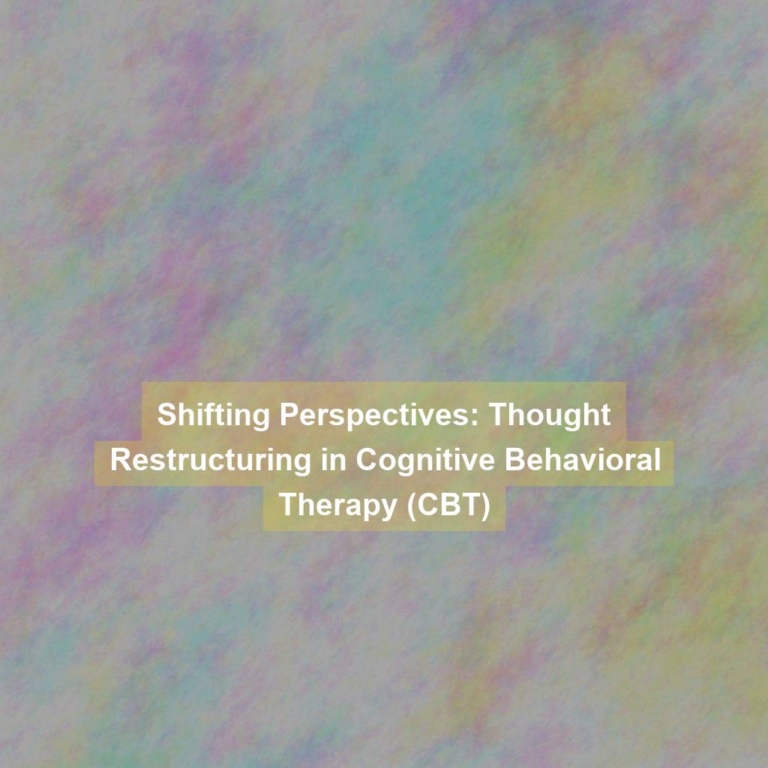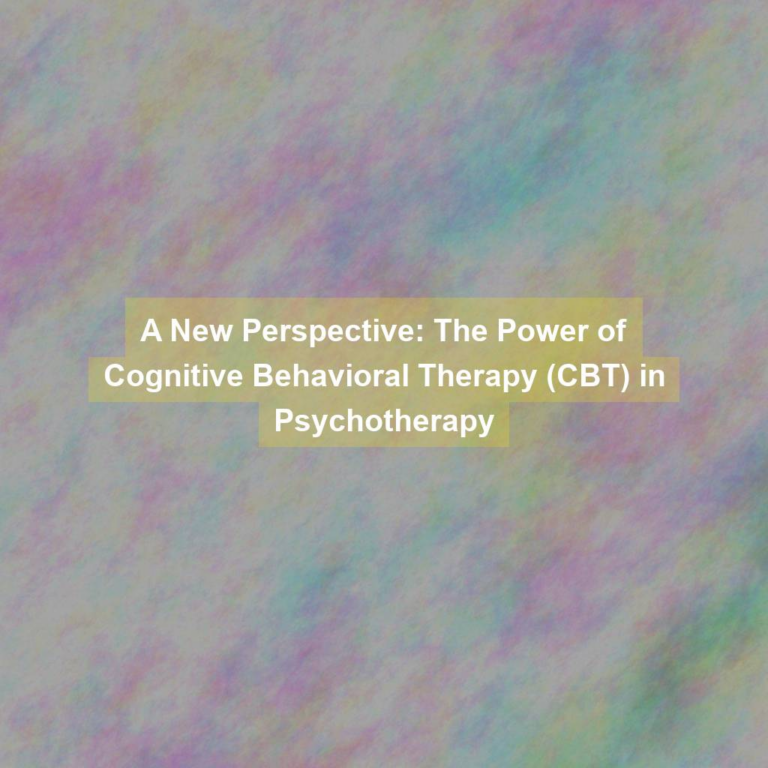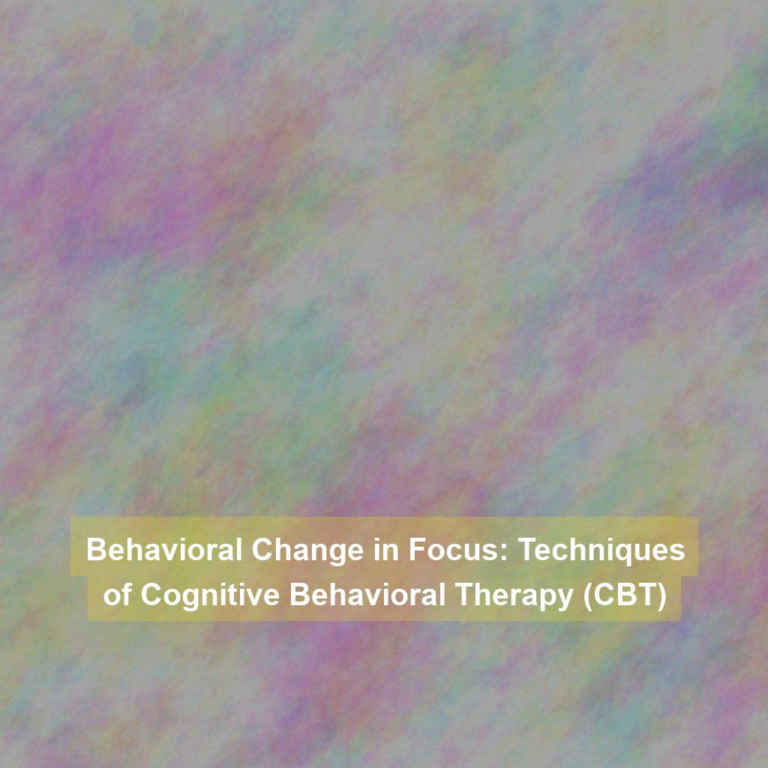Are you ready to restructure your mind and transform your thoughts?
Cognitive Behavioral Therapy (CBT) offers a practical and evidence-based approach to challenge and change negative thought patterns, paving the way for a more positive and fulfilling life.
But how exactly does CBT accomplish this?
By understanding the inner workings of CBT and its application in thought transformation, you’ll gain insight into the power of your own mind and the potential for lasting change.
Understanding Cognitive Behavioral Therapy
Cognitive Behavioral Therapy (CBT) is a widely used form of psychotherapy that focuses on identifying and changing negative thought patterns and behaviors. It operates on the principle that our thoughts, feelings, and actions are interconnected, and by altering our thoughts, we can positively influence our emotions and behaviors. CBT is rooted in the idea that how we perceive a situation influences how we feel and behave. This therapy emphasizes the present and is goal-oriented, aiming to identify specific problems and develop practical strategies for overcoming them.
CBT is structured and collaborative, with you and your therapist working together to set clear goals for each session. You’ll learn to recognize and challenge negative thought patterns, replacing them with more realistic and positive interpretations. Through exercises and homework assignments, you’ll practice applying these new thought patterns in your daily life. By actively engaging in this process, you’ll develop a deeper understanding of the connection between your thoughts, feelings, and behaviors, and gain practical skills for managing challenges effectively.
Identifying Negative Thought Patterns
Now, let’s shift our focus to recognizing and confronting negative thought patterns that influence your emotions and behaviors in Cognitive Behavioral Therapy (CBT). Identifying negative thought patterns is a crucial step in CBT as it allows you to gain insight into the automatic thoughts that contribute to distress and maladaptive behaviors.
These negative thought patterns often fall into categories such as catastrophizing, overgeneralization, personalization, and black-and-white thinking. By paying close attention to your thoughts, you can start to identify these patterns and their impact on your emotions and actions.
One effective way to identify negative thought patterns is to keep a thought journal. Whenever you notice a shift in your mood or experience a distressing emotion, take a moment to jot down the thoughts that preceded it. This can help you recognize recurring themes or cognitive distortions that may be contributing to your distress.
Additionally, engaging in regular mindfulness practice can help you become more aware of your thoughts and their associated emotions, making it easier to identify negative patterns as they arise. By becoming adept at recognizing these negative thought patterns, you can then work on challenging and restructuring them to promote healthier thinking and improve emotional well-being.
Challenging and Reframing Thoughts
To effectively challenge and reframe negative thought patterns, it’s essential to objectively evaluate the evidence supporting these thoughts. When a negative thought arises, take a moment to examine the evidence for and against it. Ask yourself, ‘What proof do I’ve that this thought is true?’ and ‘What evidence suggests that this thought mightn’t be entirely accurate?’ By critically analyzing the basis of your negative thoughts, you can start to dismantle their power over your emotions and actions.
Once you have objectively assessed the evidence, it’s time to reframe these negative thoughts into more balanced and realistic perspectives. For example, if you catch yourself thinking, ‘I always mess things up,’ reframe this thought by considering times when you have succeeded or made progress. By consciously shifting your focus to more balanced viewpoints, you can begin to establish healthier thinking patterns.
Implementing Behavioral Strategies
When implementing behavioral strategies, focus on identifying specific actions that can help you challenge and change your negative thought patterns. One effective strategy is behavioral experiments, where you test out your beliefs and assumptions in real-life situations. For example, if you tend to avoid social gatherings due to thoughts of not being liked, try attending a small event and observe how people respond to you. This can help you gather evidence to challenge your negative beliefs.
Another useful approach is creating a daily routine that incorporates positive activities. Engaging in regular exercise, hobbies, or social interactions can help shift your focus away from negative thoughts and improve your mood. Additionally, setting achievable goals and rewarding yourself for completing them can reinforce positive behaviors and help break the cycle of negative thinking.
Furthermore, practicing mindfulness and relaxation techniques can assist in managing stress and anxiety, which are often linked to negative thought patterns. Techniques such as deep breathing, meditation, and progressive muscle relaxation can help you become more aware of your thoughts and emotions, allowing you to respond to them in a healthier way. Implementing these behavioral strategies can empower you to challenge and transform your negative thinking patterns.
Sustaining Thought Transformation
After implementing behavioral strategies to challenge and change negative thought patterns, sustaining thought transformation involves consistently practicing and reinforcing these new cognitive patterns in your daily life. It’s essential to maintain awareness of your thoughts and actively replace negative patterns with positive, rational ones. This requires ongoing effort and dedication.
One effective way to sustain thought transformation is by regularly engaging in mindfulness practices. Mindfulness helps you observe your thoughts without judgment and allows you to consciously choose more constructive thought patterns. Additionally, setting specific, achievable goals related to your cognitive restructuring can provide direction and motivation. For instance, you could aim to challenge one negative thought per day and replace it with a positive alternative.
Surrounding yourself with a supportive environment is also crucial. Seek out individuals who understand your journey and can provide encouragement and constructive feedback. Finally, remember that sustaining thought transformation is a gradual process. It’s normal to encounter setbacks, but by consistently practicing these strategies, you can reinforce lasting cognitive change.
Conclusion
So, if you want to restructure your mind and overcome negative thought patterns, CBT can help. By identifying, challenging, and reframing your thoughts, as well as implementing behavioral strategies, you can transform your thinking and improve your mental well-being.
It’s a process that takes time and effort, but the results can be life-changing. Keep working on sustaining your thought transformation and remember that change is possible with the right tools and mindset.







